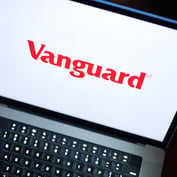Nov. 4, 2003 — Standard & Poor’s 500-stock index is the giant of the index mutual fund world. More than 160 funds track the broad-based index, including the country’s largest mutual fund, Vanguard 500 Index/Inv (VFINX). But, S&P 500 funds aren’t alone anymore. Including different share classes, a staggering 583 mutual funds now track indexes. Investors can choose from the major U.S. stock and bond market indexes, indexes that track countries such as Malaysia or the Netherlands, or indexes that cover the gas market. Some juice up their returns with options, offering multiples or the opposite of an index’s return. Others finely slice the market according to investment style, such as large-cap, small-cap, value or growth.
Index funds have several advantages: They have low costs, are tax-efficient, and beat active money managers over the long haul. A recent Standard & Poor’s study shows that the S&P 500 index beat 53.4% of large-cap funds over the last five years. So why pay active managers all that extra to futilely try to beat the market when you can bet with the market?
With all the index choices out there, how do you find the one that makes sense for your portfolio?
First, let’s look at the S&P 500 index. Standard & Poor’s picks the companies in the index based not only on size, but also what sectors they are in, so the index represents a wide swath of corporate America. Its holdings are weighted by market capitalization. The top ten holdings account for just a quarter — 23.6% — of the index. That means the index is a close proxy for the biggest companies in America.
The problem with that is you don’t want to just invest in big companies. For a diversified portfolio, you want all kinds of companies, especially small ones.
Vanguard founder John Bogle, often thought of as the godfather of index funds, recommends investing in funds that track the Wilshire 5000-stock index. The name 5000 is a misnomer as this index covers all companies that regularly trade, a constantly changing pool that currently encompasses some 6,500 companies. Funds that track the Wilshire typically take a sampling of the smaller companies to keep trading costs low.
While the Wilshire index encompasses a wider range of companies, since it is weighted by size, the big companies in the S&P 500 index make up the bulk of the portfolio. For example, in Vanguard Total Stock Market Index/Inv (VTSMX), which tracks the Wilshire index, the top ten holdings make up about 19% of the portfolio. The median size of the companies in the Vanguard fund is $26.2 billion, which is much smaller than the $49 billion median size of holdings in Vanguard 500 Index Fund, but still quite large.
Moreover, indexes that try to cover a broad market end up closely mimicking the S&P 500 index in performance. Over the last decade through September, Vanguard’s 500 Index Fund averaged 10.0%, versus 9.4% for Vanguard Total Stock Market Index Fund, a small difference.
“What I hear people say, if you want broad market exposure, is go to the Wilshire. But that index is also cap-weighted,” says Rosanne Pane, S&P’s chief mutual fund strategist.
Funds that try to beat the S&P 500 by letting a manager try to outsmart the market often end up outwitted themselves and weighed down by heavy fees. Nationwide S&P 500 Index/B (NBSPX), for example, carries a 1.23% expense ratio, a 1% 12b-1 fee, and a 5% back-end load. The fund returned 13.6% so far this year through September.








 November 06, 2003 at 07:00 PM
November 06, 2003 at 07:00 PM









